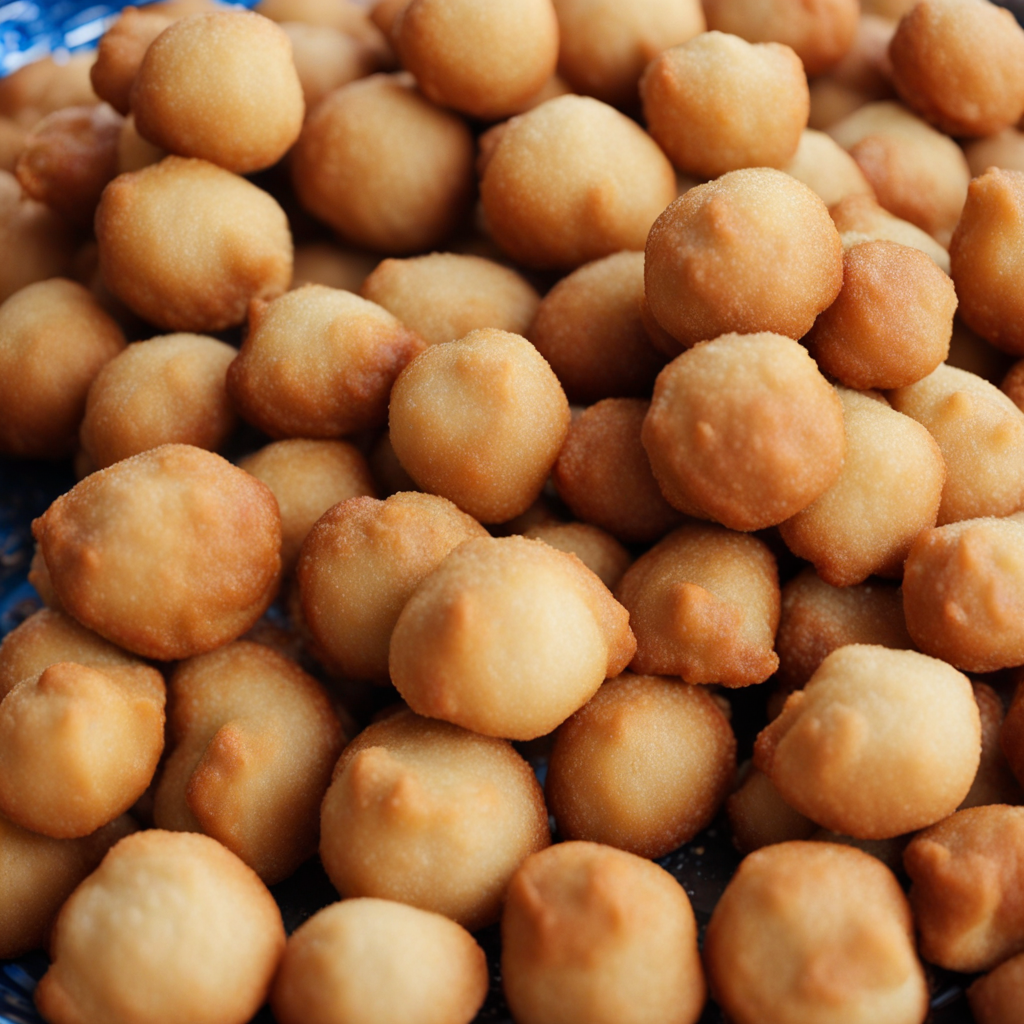Chak-chak
Chak-chak is a delightful traditional sweet treat from Kazakhstan that embodies the rich cultural heritage of the region. This dessert is primarily made from deep-fried dough, which is often shaped into small, bite-sized pieces. The dough is typically flavored with a hint of salt and sometimes a touch of vanilla, creating a subtle contrast to the sweetness that follows. Once fried to a golden brown, the pieces are generously coated in a warm, sticky honey syrup that acts as the glue binding them together, resulting in a crunchy yet chewy texture that is simply irresistible. What makes Chak-chak particularly fascinating is the way it reflects the nomadic lifestyle of the Kazakh people. Traditionally, it was prepared for special occasions and celebrations, showcasing the communal spirit of sharing and hospitality. The honey not only sweetens the dish but also symbolizes abundance and happiness, making Chak-chak an integral part of festive gatherings. Its visually appealing presentation, often shaped into intricate towers or mounds, adds to the charm of this confection, making it a centerpiece at many celebrations. When you take a bite of Chak-chak, the first sensation is the delightful crunch of the outer layer, followed by the gooey sweetness of honey that coats the dough pieces. The flavors meld beautifully, offering a harmonious balance between the light savory notes of the dough and the rich sweetness of the honey. This unique combination, along with its cultural significance, makes Chak-chak a must-try for anyone looking to explore the delectable world of Kazakh cuisine. Whether enjoyed on its own or paired with a cup of tea, Chak-chak promises an unforgettable taste experience that will linger in your memory.
How It Became This Dish
Origin of Чак-чак Чак-чак is a traditional sweet delicacy from Kazakhstan, deeply rooted in the culinary traditions of the region. Its origins can be traced back to the nomadic cultures of Central Asia, where it was crafted by the Kazakh people as a festive treat. The name "чак-чак" itself is derived from the sound made during the preparation of the dish, which involves frying small pieces of dough until they are golden brown and then coating them with honey. This unique preparation method reflects the resourcefulness of nomadic tribes who relied on available ingredients such as flour, honey, and butter. The historical context of Чак-чак is tightly interwoven with the socio-cultural fabric of Kazakhstan. Nomadic tribes often celebrated significant events such as weddings, harvests, and religious holidays with feasts that showcased their culinary heritage. Чак-чак became a symbol of hospitality and generosity, frequently served to guests as a sign of respect and appreciation. Its presence at celebrations highlights the importance of communal sharing and the bonds formed through food in Kazakh culture. Cultural Significance In addition to being a festive treat, Чак-чак holds a place of honor in Kazakh culture as a representation of national identity. The dish is often featured in literature, poetry, and folk tales, serving as a reminder of the rich traditions and customs of the Kazakh people. It is not merely a dessert but a cultural artifact that embodies the values of family, friendship, and community. During special occasions, families gather to prepare Чак-чак together, reinforcing social ties and passing down culinary knowledge to younger generations. The act of making Чак-чак is often accompanied by stories and laughter, transforming the preparation into a cherished family ritual. This communal aspect of its preparation is significant in Kazakh culture, as food preparation has always been a means of fostering relationships and creating memories. Each family may have its own unique recipe or method of preparation, contributing to the diversity of Чак-чак across the country. Development Over Time As Kazakhstan developed and modernized, so too did Чак-чак. While the traditional recipe remains, variations have emerged that reflect contemporary tastes and influences. Today, Чак-чак can be found in a variety of forms, from the classic version to more innovative adaptations that incorporate nuts, dried fruits, or even chocolate. This evolution showcases the adaptability of Kazakh culinary traditions in response to globalization and changing dietary preferences. In recent years, Чак-чак has gained recognition beyond Kazakhstan's borders, becoming a symbol of Kazakh cuisine on the international stage. The dish is often featured at cultural festivals and food exhibitions, allowing people from different backgrounds to experience its unique flavor and texture. This exposure has not only increased its popularity but also sparked interest in the broader culinary heritage of Kazakhstan, encouraging a revival of traditional cooking methods and ingredients. Modern-day Significance Today, Чак-чак is more than just a sweet treat; it has become a cultural emblem that represents the spirit of the Kazakh people. Various cities across Kazakhstan host festivals dedicated to this beloved dessert, celebrating its history and the skills involved in its preparation. Chefs and home cooks alike take pride in mastering the art of making Чак-чак, often experimenting with new recipes while staying true to the traditional methods. In addition to its culinary significance, Чак-чак plays a role in Kazakhstan's national identity and heritage. The dish is celebrated in various cultural initiatives aimed at preserving and promoting the traditional practices of the Kazakh people. For example, culinary schools and cultural organizations often include Чак-чак in their programs, teaching young chefs the importance of this dish and the stories behind it. Conclusion The enduring legacy of Чак-чак is a testament to the resilience and creativity of the Kazakh people. As it continues to be enjoyed by new generations and embraced by food enthusiasts around the world, Чак-чак remains a delicious representation of Kazakhstan's rich culinary heritage. Whether served at a grand celebration or enjoyed as a casual snack, this sweet treat will always hold a special place in the hearts and homes of the Kazakh people. Through its flavors and stories, Чак-чак embodies the essence of hospitality, community, and cultural pride that defines the spirit of Kazakhstan.
You may like
Discover local flavors from Kazakhstan







